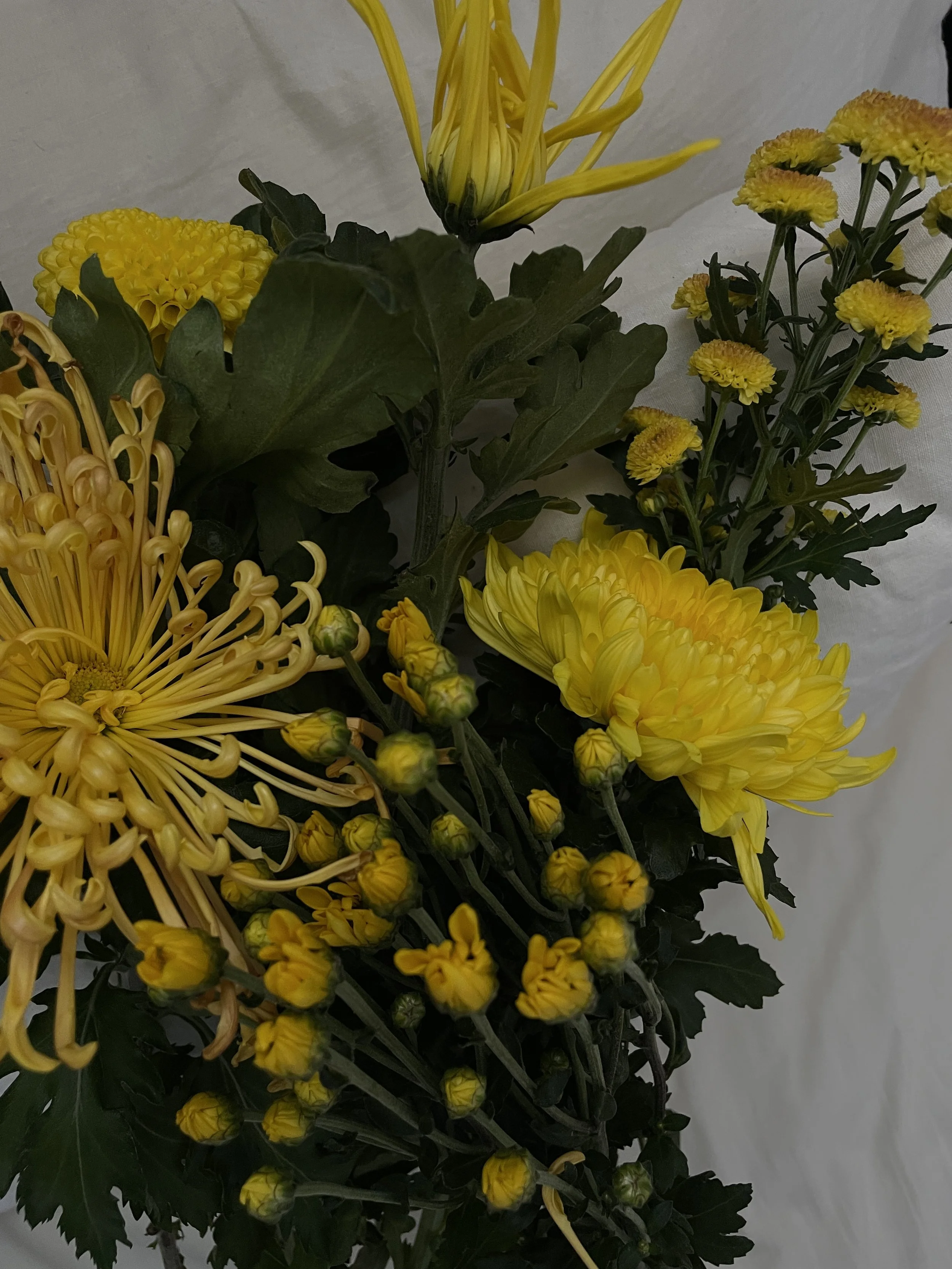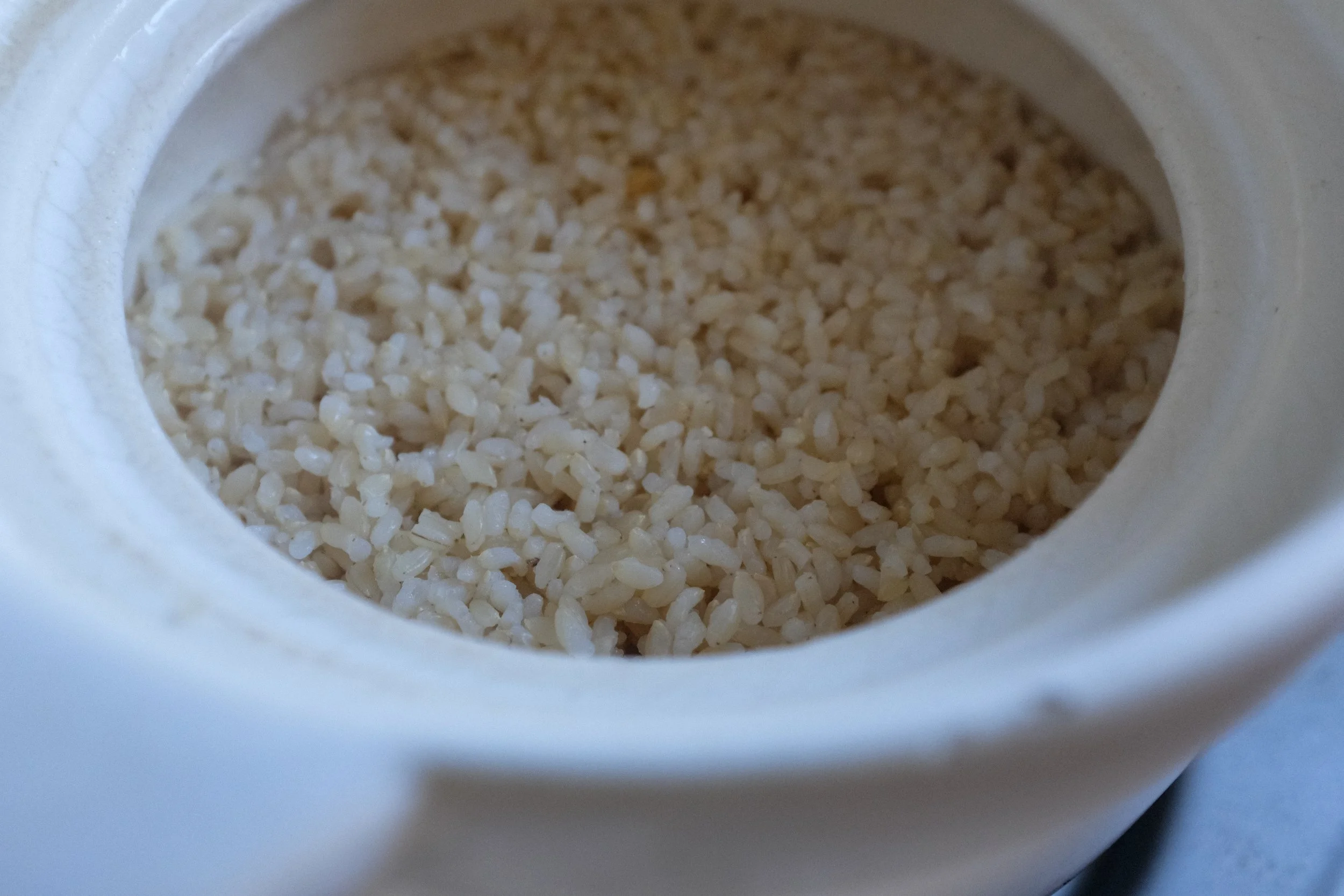SEARCH JOURNAL ENTRIES
Microseason: Chrysanthemums Bloom
Kiku, or Chrysanthemums, are central to traditional customs of the season. There are over 350 varietals in Japan. As the national flower, parks, temples, and shrines show off their Chrysanthemums this time of year.
Microseason: Wild Geese Return
This time of year is know for chestnut preparation of all sorts. And for us in Japan, the news is that this year’s harvest is abundant. In cookery, in addition to plating using seasonal chestnut leaves, there are sweet and savory applications of course. The bitter skin if sometimes intentionally left in tact to create a complex flavor profile when sweet braising.
Microseason: Rice Fields Drain
Over Summer, the country’s rice supply becomes scarce as we enjoy the final bites of last year’s bounty and prepare for rice harvest season. Talk of shinmai, or new rice, is on everyone’s lips. Our kitchens await the freshest delivery from our favorite farmer. While sun-dried, shinmai is still rich with moisture and produces the most luscious glossy steamed rice. I suspect most Japanese people will say that there is no greater luxury than hot steamed shinmai right out of the pot.
Microseason: Insects Close the Door
Every year on the 1st October, Zuiki Festival is held at Kitanotenmangu Shrine in Kyoto. It’s a festival that has been celebrated annually for over 1000 years to express our great gratitude for our Autumn harvest.
Microseason: Thunder’s Voice Quiets
We have entered the subseason Autumn Equinox, which means we are now situated precisely at the peak of Autumn. In Japan, Autumn is associated to sports, reading, gastronomy, and the arts. And the distinctive urokogumo or scale clouds, the type of altocumulus that take on a fish scale-like look.
Microseason: Swallows Depart
During this microseason, Swallows depart Japan and begin heading South. Sometimes they travel as much as 300km per day. Their destination is usually Australia or South East Asia. So if you reside in these areas of the world, then the name of your microseason a few weeks from now may be “Swallows Return”.
Microseason: Wagtail Sing
Wagtail, part of the Sparrow family, are said to call in the season. It’s their song that signals that we are properly situated in Autumn.
Microseason: Dewy Flora
During this subseason called White Dew, we experience a moistness that is clearly different from Summer. It’s not the heavy weight of balmy humidity, but rather a hint of coolness in the breeze that is a marker of typhoon season. While in the city it still feels quite Summer, Dewy Flora seen in the early mornings in the mountains let us know that we are certainly in Autumn.
Microseason: Grains Ripen
Grains Ripen is the last microseason of Heat Breaks. This time of year, I have come to observe the landscape evolve from monotone green, to one that is graced with golden hues. Spending this microseason to remind myself to yudaneru has become an annual ritual.
Microseason: Heavens and Earth Cool
Phrases such as “break bread” or “bread and butter” showcase the prominence of bread or wheat in English-speaking regions of the world. “Rice” is used similarly in Japan.
Microseason: Cotton Flowers Open
While cotton is a recent introduction to Japan, only seeing widespread cultivation and active use from the 1600s after its reintroduction into Japan, it is interesting to note that “Cotton Flowers Open” is a microseason that does not exist in the original Chinese calendar.
Microseason: Heavy Fog Drapes
In the wee hours of the morning fog dresses the mountains and waterways. Signaling last days of the heat. It’s an official farewell to Summer, as well as to our Ancestors who have come for a visit this past week.
Microseason: Sound of Evening Cicada
In Summer, one cannot go without noticing the cicadas. For Japanese people, they are as synonymous with the season, as is watermelon, yukata, fireworks, and festivals. They are so iconic in fact, that the average person is familiar with the various species and there are widely accepted onomatopoeia associated to each of their unique sounds.
Microseason: Cool Breeze Arrives
Koyomi, the historic microseasonal calendar, is central to my study of Time. Each research theme I have explored over the past decade, has been selected because it is absolutely imperative to Japanese living. And the sense of time is perhaps the most poignant.














